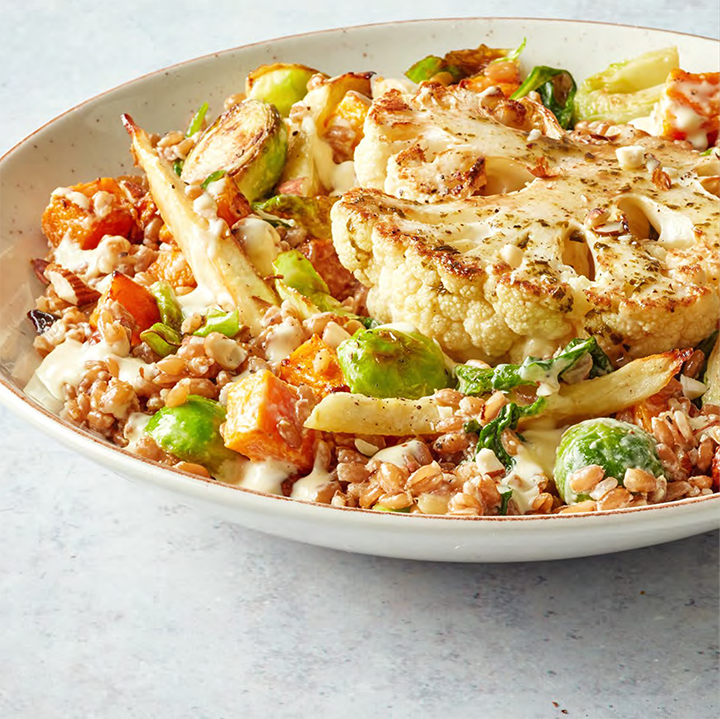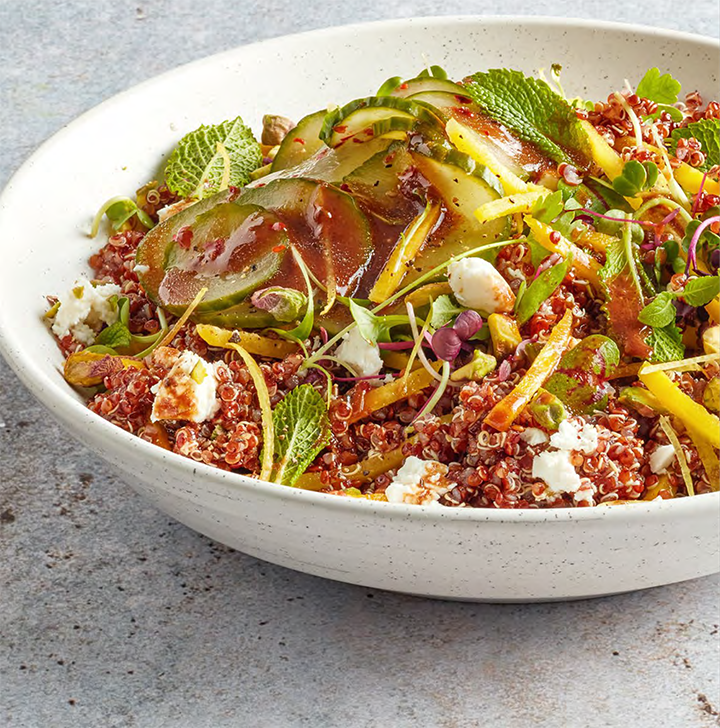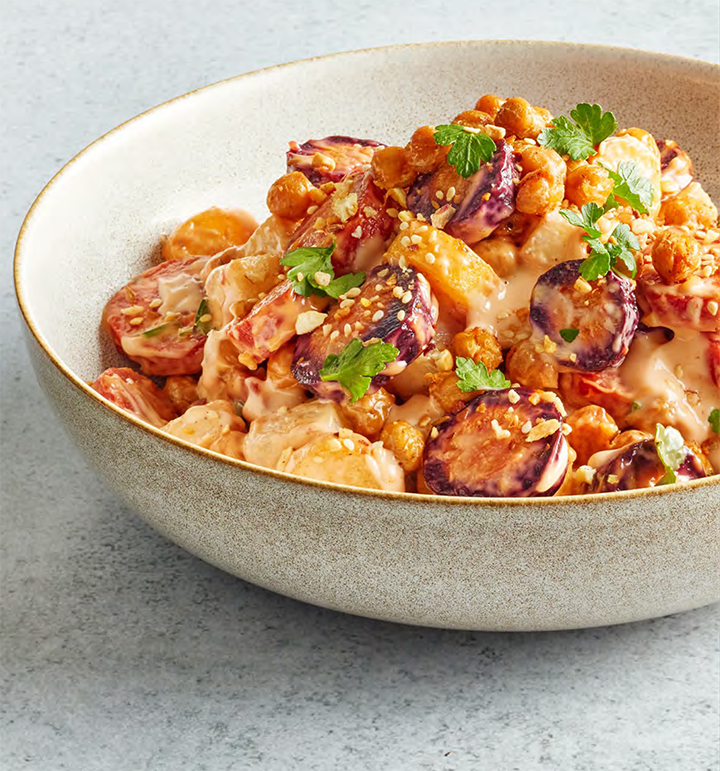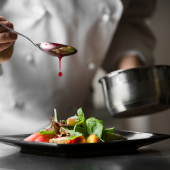As an operator, it's always a priority to produce the best-tasting food with high-profit margins. Wasted food means money lost. By getting the most out of your ingredients, you can minimize waste, benefiting the planet and your bottom line.
By using as much of an ingredient as possible, it adds uniqueness to a dish, whether it's garnishing with candied squash seeds or a carrot top pesto. Ordering vegetables whole rather than purchasing expensive "cuts" allows you to do more with your ingredients for a fraction of the cost, an all-around win.
There’s a lot to learn from various cuisines around the world where the whole animal or the whole vegetable is used in a dish. It forces the chef to get creative and not just focus on the "premium" part of the ingredient. And, as every chef knows, it's often the lesser used parts that have the most flavor and potential.
Enter bowls, a perfect dish that allows you to use many seasonal ingredients in a multitude of ways, according to Unilever Food Solutions' Future Menus Report. Focusing on the versatility of bowls, this incredibly popular menu item is a great dish format to use a multitude of ingredients in varying flavors and textures. Think of using parts of veggies that might otherwise hit the waste bin, like beet greens densely packed with nutrients or delicately flavored celery leaves. Trimmings of ahi tuna can be minced into the ever-popular spicy tuna for the perfect premium protein add-on to bowls. When you minimize waste, you maximize flavor and creativity. Adding seasonality to the bowls on your menu keeps them fresh and exciting, and keeps repeat diners coming back to see what's new.
Seasonality is key when it comes to crafting the perfect bowl, and minor ingredient swaps can easily align with other items on your menu, an even better way to get the most out of every ingredient.
Check out these recipes from the Future Menus Report.

Farro and Roasted Vegetable Bowl
Recipe courtesy Cori Boudreaux
Yield: 10
Ingredients for Creamy Horseradish Dijon Sauce
Method
- Combine ingredients and mix.
Ingredients for Salad
Method
- In a sauté pan, warm the farro, Brussels sprouts, butternut squash, parsnips, and spinach until warmed through and spinach is beginning to wilt.
- Add salt, pepper, toasted coriander, and lemon juice to taste.
- Plate the farro mixture, top with cauliflower, drizzle the Creamy Horseradish Dijon Sauce, garnish with almonds and dill freshly chopped.
Chef tip: To add a contrasting pop of sweetness and make this bowl seasonal, consider including diced apple, dried cranberries, or chopped dates.

Golden Beet Quinoa Bowl
Recipe courtesy Dana Cohen
Yield: 10
Ingredients for Pickled Cucumbers
Method
-
Combine the vinegar, water, salt, sugar, peppercorns, red pepper, garlic and bay leaves, and bring to a simmer on medium heat.
-
Once at a simmer, add the sliced cucumber and pull off the heat and let cool to room temperature.
-
Yield: 4½ cups
Ingredients for Salad
Method
-
Toss together the Hellmann's Classics Balsamic Vinaigrette Dressing, quinoa, beets and mint, and top with remaining ingredients.

Middle Eastern Roasted Vegetables
Recipe courtesy Kyle Jakobi
Yield: 10
Ingredients for Creamy Harissa Dressing
Method
-
Combine ingredients and whisk to combine.
Ingredients for Seasoned Carrots
Method
-
Combine ingredients and toss until carrots are well coated. Roast in oven at 400°F until tender
Ingredients for Salad
Method
-
Combine all ingredients except fried chickpeas and gently mix.
-
Garnish with fried chickpeas.



